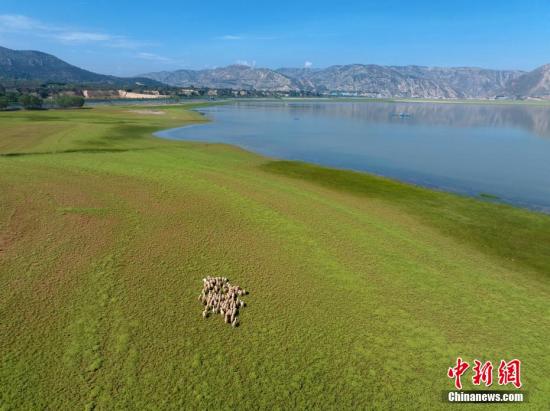Qinghai-Tibet Plateau becoming warmer, wetter, greener
The Qinghai-Tibet Plateau, known as "Asia's water tower," under the influence of global warming, is becoming warmer, wetter and greener, which could increase the frequency of extreme weather events in China, according to the results of a scientific expedition in the region released on Sunday in Lhasa, the Xizang Autonomous Region.
The Second Qinghai-Tibet Plateau Scientific Expedition and Research was launched and implemented on August 19, 2017. It organized over 2,600 expedition teams and involved more than 28,000 participants to conduct scientific research covering the entire Qinghai-Tibet Plateau. At the Sunday press conference, Yao Tandong, the leader of the expedition team and an academician of the Chinese Academy of Sciences, introduced the major landmark achievements on behalf of the expedition team.
China investigated the Qinghai-Tibet Plateau with a target region encompassing "one glacier, two lakes and three rivers" during this scientific expedition. The region is home to the Purog Kangri Glacier, the world's largest glacier located in a mid- to low-latitude region, as well as Siling Lake and Namtso Lake, the largest and second-largest lakes in Xizang, respectively. It is also the birthplace of the Yangtze River, Nujiang River and Yarlung Zangbo River, according to the Xinhua News Agency.
Scientific research has found that the Qinghai-Tibet Plateau is becoming warmer, wetter and greener. Over the past 15 years, the ecosystem of the Qinghai-Tibet Plateau has shown an overall trend of improvement, with the proportion of grassland and forest area of good grade increasing by 6 percent and 12 percent respectively.
The region's water conservation, soil retention and wind prevention and sand fixation have increased by 1 percent, 2 percent and 70 percent, according to Xinhua.
However, the Asian water tower region, with the reduction in ice and increase in greenery, is also reflecting less light back into space, which will lead to major change in Earth's weather systems, triggering adjustments in the Asian monsoon circulation and potentially intensifying extreme weather events in China, scientists said.
It will also drive the exchange of moisture cycles between the northern and southern hemispheres, enhancing the Qinghai-Tibet Plateau's role in modulating global climate change through its thermal effects, according to China Central Television.
According to the report by Xinhua, the researchers have also discovered more than 3,000 new species and rediscovered a number of species that were thought to be extinct or had not been seen for many years.
The research has suggested that the earliest human activity on the Qinghai-Tibet Plateau may have occurred 190,000 years ago, providing new evidence of the adaptation of human activity to the Qinghai-Tibet Plateau.
The scientific expedition also established for the first time a database on multiple disasters on the Qinghai-Tibet Plateau, revealing their spatial and temporal distribution patterns.
It has also set up a monitoring system for meteorological disasters along the routes of major engineering projects, providing data support for the forecasting and warning system for disasters such as heavy rainfall, snowstorms and thunder storms.

